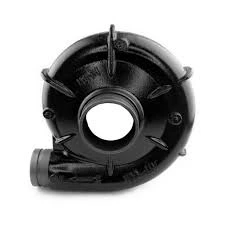Mobile:+86-311-808-126-83
Email:info@ydcastings.com
impeller wearing
Understanding Impeller Wearing Causes, Effects, and Mitigation Strategies
Impellers are critical components in various industrial applications, particularly in pumps, turbines, and compressors. Their primary function is to transfer energy to the fluid, allowing for efficient movement and circulation. However, over time, impellers can experience wear and tear, a phenomenon known as impeller wearing. This article delves into the causes and effects of impeller wearing and explores strategies to mitigate this issue.
Causes of Impeller Wearing
The wearing of impellers can be attributed to several factors, including material selection, operating conditions, and fluid characteristics.
1. Material Selection The choice of material for the impeller plays a significant role in its durability. Commonly used materials include stainless steel, bronze, and various composites. Each material has distinct properties that influence its resistance to wear. For instance, composite materials might offer better corrosion resistance but could be less durable under abrasive conditions compared to metals.
2. Operating Conditions The operational environment of an impeller greatly influences its wear rate. High rotational speeds and pressures can accelerate the wearing process. Additionally, improper alignment or balancing can lead to uneven wear patterns, causing more rapid deterioration.
3. Fluid Characteristics The properties of the fluid being handled also contribute to impeller wearing. Fluids containing abrasive particles, such as sand or silt, can significantly increase wear on impeller surfaces. Similarly, corrosive fluids can lead to chemical reactions that degrade the material of the impeller over time.
Effects of Impeller Wearing
The consequences of impeller wearing extend beyond mere performance degradation. Some of the notable effects include
1. Reduced Efficiency As impellers wear, their ability to transfer energy to the fluid diminishes. This reduction in efficiency can lead to higher energy consumption and increased operating costs, as the equipment requires more power to achieve the same performance levels.
impeller wearing

2. Operational Downtime Worn impellers can cause disruptions in systems, necessitating repairs or replacements. This can lead to significant operational downtime, affecting productivity and potentially leading to financial losses.
3. Compromised Safety In some applications, particularly in chemical processing or handling hazardous materials, a compromised impeller can pose safety risks. A failure in the impeller could result in spills, leaks, or even catastrophic failures, endangering personnel and the environment.
Mitigation Strategies
To combat impeller wearing, several strategies can be employed
1. Regular Maintenance and Inspection Implementing a routine maintenance schedule helps in identifying wear early on. Regular inspections can reveal signs of wear and allow for timely interventions, such as repairs or replacements.
2. Material Improvements Advances in material science have led to the development of more durable materials that resist wear. Choosing the appropriate material based on the specific application can significantly reduce the rate of impeller wearing.
3. Optimizing Operational Parameters Adjusting the operating conditions, such as reducing the rotational speed or pressure, can help minimize wear. Additionally, ensuring proper alignment and balance of the impeller can prevent uneven wear.
4. Installation of Wear Liners In high-abrasive applications, the installation of wear liners or protective coatings can extend the life of the impeller by providing an additional layer of protection against abrasive particles.
Conclusion
Impeller wearing is an inevitable process in many industrial applications, but understanding its causes and effects can help in developing effective mitigation strategies. By focusing on material selection, regular inspection, and optimizing operational parameters, industries can extend the lifespan of their impellers, enhance efficiency, and ensure safe operations. As technology advances, continuous efforts in material science and engineering practices will further alleviate the challenges posed by impeller wear.
-
Understanding Metal Casting TechniquesNewsApr.02,2025
-
Understanding Exhaust Manifolds for Enhanced Engine PerformanceNewsApr.02,2025
-
The World of Metal FabricationNewsApr.02,2025
-
Key Components for Pump and Turbo EfficiencyNewsApr.02,2025
-
Essential Tools for Automotive Maintenance and RepairNewsApr.02,2025
-
Durable Valve Components for Effective Water ManagementNewsApr.02,2025











